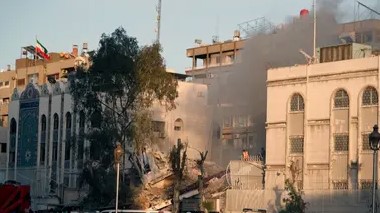The Massacre That Shaped Modern Syria
More than forty years ago, one of the darkest events in modern Arab history unfolded in the Syrian city of Hama. Known today as the Hama Massacre, the tragedy began on February 2, 1982, when the Syrian government launched a devastating military assault on the city. At the time, Hama was a stronghold of the Muslim Brotherhood, an Islamist opposition group that had been actively resisting the government’s authority.
The conflict in Hama arose from growing tensions between the government and the opposition, which had escalated into violent confrontations. The Muslim Brotherhood targeted military officials, ruling party offices, and state institutions, prompting a fierce response. Determined to quash the unrest, the government unleashed warplanes on the city, leveling entire neighborhoods and indiscriminately killing civilians. Heavy artillery units, commanded by senior officials, launched a massive ground invasion following the airstrikes.
The sheer scale of the violence was horrifying. Reports estimate that between 10,000 and 40,000 people were either killed or disappeared, though exact figures remain uncertain due to the lack of documentation. Survivors recounted harrowing tales of mass executions and widespread destruction. By the end of the nearly month-long siege, Hama was reduced to rubble, with its historic and cultural landmarks in ruins.
This brutal operation not only silenced the opposition in Hama but also sent a chilling message to dissenters across the country. The massacre became a dark chapter in Syria’s history, remembered for the unprecedented loss of life and the utter devastation inflicted upon an entire city.
Hama’s Role in the Uprising
The legacy of the massacre lingered in the hearts and minds of Syrians for decades. It became a symbol of both resistance and suppression. In 2011, nearly three decades after the tragedy, Hama emerged once again as a focal point of opposition, this time during the Arab Spring. A wave of protests swept through the region, calling for democratic reforms and an end to authoritarian rule.
Hama and its surrounding towns quickly became the epicenter of anti-government demonstrations. Protesters poured into the streets, chanting slogans against the government and demanding change. “Erhal ya Bashar,” a chant that means “Come on, leave, Bashar,” echoed through the city, encapsulating the collective anger and defiance of the people.
Residents turned the city into a canvas of remembrance and resistance. Residents painted walls red to symbolize the bloodshed of the 1982 massacre and splashed red paint on the city’s iconic waterwheels on the Orontes River as a grim reminder of the past. For a brief moment, the government’s forces withdrew, and the city experienced a fleeting sense of liberation.
During this short-lived freedom, residents organized local governance and attempted to rebuild their community. The spirit of unity and hope filled the air. However, this fragile freedom was brutally shattered when government forces returned in August 2012. The assault was swift and deadly, with significant casualties reported within the first 24 hours. Protest leaders were targeted and silenced, many losing their lives in acts of retribution.
This cycle of resistance and suppression highlighted the deep scars left by the 1982 massacre. Hama became a symbol of resilience for the opposition and a constant reminder of the lengths the government would go to maintain control.
Strategic and Symbolic Importance of Hama
Hama’s importance extends far beyond its tragic history. Strategically located in the heart of Syria, the city serves as a vital intersection connecting various regions of the country. Its position makes it a critical hub for transportation and communication, linking the central regions with the north, east, and the coastal provinces.
Hama province borders Latakia, a coastal region that is a stronghold of support for the government. Latakia is also home to key infrastructure, including a Russian naval base, making it a cornerstone of the government’s defense. The loss of Hama would not only weaken the government’s control but also disrupt vital supply routes and strategic connections.
The city’s significance grew during the Syrian civil war, becoming a major battleground for insurgent groups and government forces. Rebel groups viewed Hama as a stepping stone to further advances, while the government recognized the city’s capture as a severe threat to its stability.
South of Hama lies the province of Homs, another critical region in Syria’s geography. Homs is home to one of the country’s two state-run oil refineries, making it an economic and logistical asset. It also serves as a gateway to Damascus, the capital, connecting it to the coastal regions.
The fall of Hama would pave the way for opposition forces to target Homs, potentially severing the government’s access to the coast and isolating the capital. Such a development would be a significant blow to the government, both strategically and symbolically.
The Legacy of Hama
The Hama Massacre and the city’s subsequent role in the Syrian conflict underscore the deep divisions within the country. For many, Hama symbolizes the struggle for freedom and the heavy price of resistance. Its tragic history serves as a stark reminder of the devastating consequences of authoritarian rule and the resilience of those who dare to oppose it.
Though decades have passed since the massacre, the memories remain vivid in the minds of Syrians. Each year, the events of 1982 are commemorated, keeping the legacy of Hama alive. The city’s strategic location and symbolic value ensure that it will continue to play a central role in Syria’s ongoing story, reflecting both the challenges and the enduring spirit of its people.





